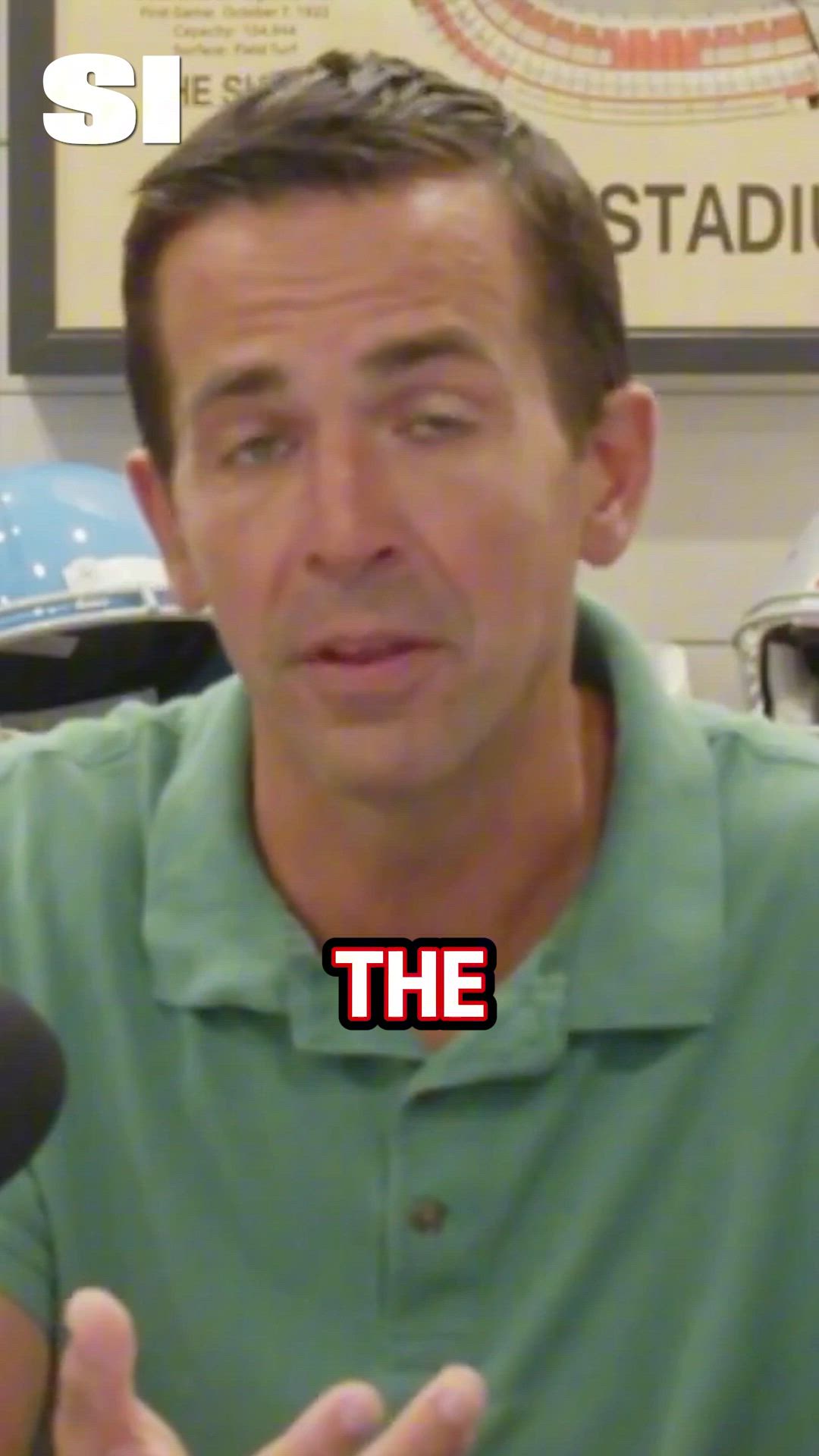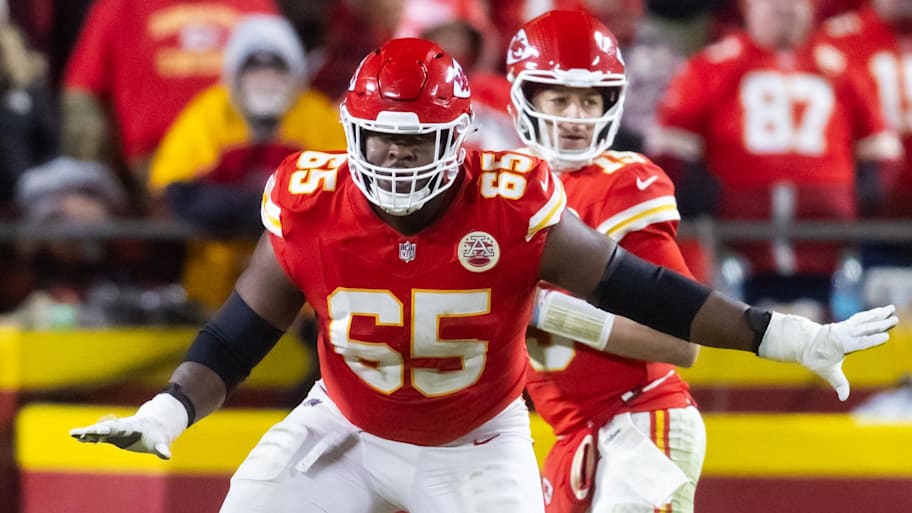
On July 14, NFL fans were waiting to see whether the Chiefs and star right guard Trey Smith would beat the deadline to sign franchise-tagged players to a long-term deal.
Smith himself wasn’t waiting at all.
The day before signing a market-setting four-year, $94 million contract, including a record $70 million guaranteed for a guard, Smith was at One Arrowhead Drive working out in preparation for the 2025 season.
Twenty-four hours later, he was rich beyond his wildest dreams, and the Chiefs had a cornerstone player locked in through the 2028 season.
“Given the talent and cultural impact a player like Trey brings to an organization, he was a priority for us,” Chiefs general manager Brett Veach said. “Extensions off of a franchise tag can be challenging for players, teams and agents to get done. When we started negotiations in February, we knew there would be a lot of hurdles.
“It was clear that if Trey hit the market this offseason, he likely would have received contract offers at or above the franchise tag number on an annual basis.”Chiefs GM Brett Veach
“It was clear that if Trey hit the market this offseason, he likely would have received contract offers at or above the franchise tag number on an annual basis. Given how the guard market has exploded, we feel this deal is a win for both the organization and the player. I appreciate working with Trey, [agent] Tory [Dandy] and [agent] Jimmy [Sexton] to get a deal done that made sense for everyone involved.”
Despite both sides reaching a deal, there were challenges in the wake of the Chiefs being drubbed in Super Bowl LIX by the Eagles.
Cap space was in short supply for Kansas City, and the franchise tag was a robust $24.3 million for guards after the market had swelled the year before, with Robert Hunt securing five years and $100 million from the Panthers, and Philadelphia extending Landon Dickerson with a four-year, $88 million contract.
“For a while, because of where the tag was at, and where the guard market was, I think most people thought he was going to hit the market,” said Smith’s agent, Tory Dandy, who is managing partner and co-head of football at CAA agency. “For a while, we thought that ourselves, until they ultimately decided to tag him. The tag was kind of a surprise.”
To facilitate paying Smith’s tag, Kansas City traded perennial All-Pro guard Joe Thuney to the Bears for a 2026 fourth-round pick on March 5, one week before the new league year. The move created a necessary $16 million in cap space for Veach, who before the 2024 season had made what Dandy referred to as a “very respectable” offer, although it wouldn’t have reset the guard market. Smith declined to sign, betting his fourth season would be his best yet.
The gamble paid off. Smith earned his first Pro Bowl trip while starring for Kansas City during its third consecutive Super Bowl run.
Throughout spring and early summer, Dandy and CAA co-head of football Jimmy Sexton continued negotiating with Chiefs assistant general manager Chris Shea, who worked in concert with Veach to find the right number.
Dandy and Sexton knew what they wanted.
With Smith being 26 years old this offseason, there were a few goals: Keep the contract at three or four years, allowing Smith to either hit free agency in the prime of his career, or garner a significant extension for his third contract as the Chiefs have done with other stars such as tight end Travis Kelce and defensive tackle Chris Jones.
Another goal was to maximize guaranteed money and cash flow through the first three years of the deal. While the other three major North American men’s sports all offer fully guaranteed deals, NFL contracts often include void years and difficult-to-reach guarantees.
However, consistent dialogue between the two sides hadn’t resulted in a deal with only hours remaining before the 4 p.m. ET July 15 deadline.
“It was one of those things where you had the deadline and both sides knew we wanted to make a strong effort to get something done,” Dandy said. “Sometimes these things take up until that deadline. I’m sure Trey would rather have had it done a while ago and the team as well, but they had the draft, and they had free agency. But they had said Trey was their number one priority this offseason. We knew at some point we were going to make a strong push on both sides to get something done.”
Then, finally, there was a breakthrough in structure. Smith would become the highest-paid guard in NFL history in terms of both annual average value ($23.5 million) and guaranteed money ($70 million), while getting the proper cash flow and the aforementioned early guarantee trigger.
In Smith’s contract, the Chiefs immediately guaranteed $46.75 million, including a $17 million signing bonus. They also agreed to fully guarantee Smith’s third year on the third day of the 2026 league year. By the end of ’27, Smith will earn $70.5 million in cash.
“We wanted to make sure that not only did he reset the market, which he did by $2.5 million, but you look at the guarantee on that deal and he has it full by year two, by March,” Dandy said. “That was certainly very critical and very important. [Seventy-four] percent of the deal is guaranteed. You’re locking in that $70 million by next March.”
Beyond the money, there were a few other looming factors for Smith to stay. Among them were close friend and All-Pro center Creed Humphrey, whom Kansas City reset his positional market with last summer by way of a four-year, $72 million deal. Then there’s quarterback Patrick Mahomes, the man with whom Smith just filmed a State Farm commercial.
The trio won two Super Bowls during Smith’s rookie deal, giving Smith reason to believe more could be coming.
“That carried a lot of weight,” Dandy said. “When you have Creed, who is an All-Pro often in his career, and if he continues this pace, he could be a Hall of Famer. He and Trey are best buddies. Then you have the ultimate leader and winner in Pat Mahomes. That was very important to have, and coach Reid. Trey has a lot of respect for coach [Andy] Reid and the entire organization as well. That’s why, for him, he wasn’t thinking about going to free agency. [It was] more so, ‘Let’s make a real solid effort and push to get this done so I can get back with my guys and win some more rings.’”
Smith became an immediate starter alongside Humphrey, playing all but one game over his first four seasons after entering the NFL with serious concerns about a blood-clotting issue while at Tennessee. The problem was severe enough to drop him entirely off some team draft boards and force a draft day tumble. Kansas City finally took him in the sixth round at No. 226, only after having an impromptu huddle between owner Clark Hunt, team medical personnel, Reid and Veach.
With his new deal secured, Smith is the fourth member of Kansas City’s 2021 draft class to get a second contract, with tight end Noah Gray, inside linebacker Nick Bolton and Humphrey all having been extended. On Sunday, the Chiefs added ’22 first-round selection George Karlaftis to that list, signing him to a four-year, $88 million extension. All of those pacts represent a commitment to building within, the most consistent throughline of Kansas City’s dynasty.
With Jones and Kelce in their 30s, and Thuney already wearing another uniform, the Chiefs are making their move into the next phase of the Mahomes era. As some stars age out, others are being locked in with more presumably to come in future years, including receivers Rashee Rice and Xavier Worthy (Rice is extension-eligible in 2026, with Worthy in ’27) and All-Pro corner Trent McDuffie.
The metamorphosis has begun for Kansas City, with Smith playing a key part of the future.
As for Smith himself, the future will likely look like the past. There’s work to be done, just as there was the day before he signed for life-changing money.
This article was originally published on www.si.com as How the Chiefs’ Trey Smith Became the Highest-Paid Guard in the NFL.
